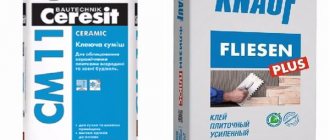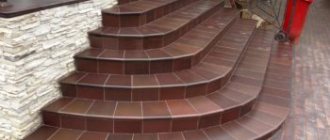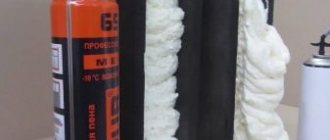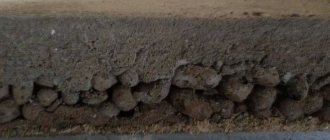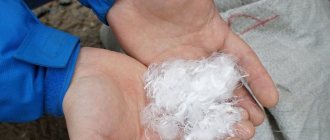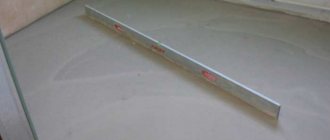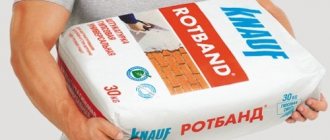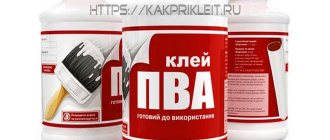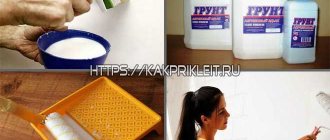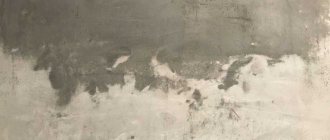When you start a renovation, you don’t want to have to redo some of the work at the end of the whole process or a few months after that. First of all, the possibility of damage threatens floor coverings laid on an unprepared base. Knowing how long it takes for a floor screed to dry is important. This will allow you to lay laminate, linoleum, parquet after all the moisture has been removed from the concrete or gypsum mixture.
How long does it take for floor screed to dry?
Why is it important to dry the solution layer completely?
Although the total drying time for a floor screed can be very long, it is highly recommended to wait until the process is complete. If the base is not dry, damage to the floor coverings is not only possible, but also inevitable. The fact is that in a properly laid screed, water simply has nowhere to go.
There is a layer of waterproofing at the bottom, so evaporation occurs only upward. This inevitably affects the finishing coatings.
Laying tiles on a wet base is also not recommended. Moisture from the concrete will inevitably affect the adhesive. In some cases, ceramics may lag due to mechanical loads, uniform adhesion is not guaranteed, and other troubles occur. In addition, a floor screed coated with glossy ceramics will dry even slower and longer.
The specific amount of time it takes for a floor screed to dry is estimated depending on the purpose of using the surface. There is a period of primary setting, after which you can walk on the solution layer. But the final drying period is much longer.
How to measure the moisture content of a screed
How to measure the moisture content of a screed
Even after the specified period, the moisture content of the cement base may remain elevated. To know for sure whether the covering can be laid, you should check the moisture level of the screed. This is very simple to do: take a paper napkin, place it on the floor, cover with plastic and leave for 24 hours. If the napkin is not damp after 24 hours, it means the screed is completely dry. If the napkin feels wet to the touch, you need to wait a few more days. There are also special measuring instruments - electronic moisture meters. The device readings should not exceed 3.4%, otherwise the screed should still dry.
Table of maximum permissible humidity values
| Flooring | Permissible percentage of residual humidity for floors without heating | Permissible percentage of residual humidity for heated floors |
| Laminate, parquet, parquet board | Up to 2% | Up to 1.5% |
| Plastic panels, linoleum | Up to 3.4% | Up to 1.5% |
| Carpet on a moisture-proof basis | Until 3% | Up to 1.5% |
| Jute backed carpet | Up to 2.5% | Up to 1.5% |
In addition to measuring humidity, the screed must be checked for strength, the absence of visible defects, delamination and shrinkage. To do this, carefully inspect the surface and lightly tap it with a hammer in certain places. A strong, high-quality screed should have a uniform color and produce a ringing sound when struck.
Screed quality assessment table
| physical characteristics | Evaluation method | Main distinguishing features |
| Residual moisture | Polyethylene or moisture meter | No wet spots under the film, device reading 4% |
| Compressive strength | Tapping with a hammer | Voiced sound - high strength, dull sound - low |
| Tensile strength | Masking tape or device | Absence of small particles on the tape after detachment from the surface, instrument reading 1.5 MPa |
| Connection points on the screed | Tapping and visual inspection | Differences between areas in structure and color, dull sound due to poor-quality connection |
Why you can’t artificially speed up drying
Concrete, cement-sand mixtures and other classical compositions must dry for a certain time to ensure good strength indicators. Accelerating the loss of moisture from a layer of solution by creating drafts or forcibly heating the room is extremely irrational. In this case, it is impossible to answer how long it takes for the floor screed to dry. And the appearance of cracks and a decrease in strength will definitely happen.
Under optimal drying conditions, it is recommended to protect the solution layer from excessive moisture loss and heating by sunlight. To do this, the floor after pouring is covered with a polymer film. It must remain on the screed for at least 7 days.
Cracks - improper care during drying
Conditions for high-quality drying
Ideally, for the first week, the floor is covered with thick plastic film. Building regulations require that the mortar must dry under the following conditions:
- humidity - within 60-70%;
- there should be no direct exposure to sunlight;
- the room temperature does not rise above 250C.
Sergey Yurievich
Construction of houses, extensions, terraces and verandas.
Ask a Question
The specified parameters are required for the entire drying period. It is not recommended to turn on heating radiators or boilers, as the air humidity will immediately drop.
How long does it take for a layer of gypsum mortar to dry?
Gypsum-based mixtures are practical and are often used in floor leveling operations. They dry quickly, forming a smooth surface. Solutions made from gypsum compounds gain strength, allowing you to walk on the surface of the pour, in 4 hours.
The time for complete drying is directly determined by the thickness of the laid mortar layer and is calculated based on the value of the normalized parameter adopted for a layer of 4 cm. It is possible to determine how long a floor screed made from a gypsum composition should dry on the basis of several assumptions:
- A 4 cm layer of solution dries completely in 7 days or 168 hours;
- for every additional 10 mm of gypsum layer, 90 hours should be added to the complete drying time;
- with a smaller thickness of the solution layer, every 10 mm takes 42 hours.
In an example, the calculation looks like this:
- A 5 cm layer of gypsum-based mortar will dry in 168 + 90 = 258 hours or 10 days and 18 hours;
- 6 cm – 348 hours (168 + 180 = 14 days 12 hours);
- 30 mm of gypsum mixture will dry in 5 days 6 hours (168 – 42 = 126 hours).
Time calculations
Let us consider separately how much time it will take for each type of screed. In particular, we will discuss materials such as:
- sand concrete;
- concrete;
- expanded clay;
- dry screed;
- semi-dry screed;
- laminate;
- tile.
From sand concrete
How to make a floor screed, how long does it take to dry a sand concrete floor screed? This type of material means a mixture of concrete and cement. It is often used.
The main thing when laying is not to forget to compact the mixture and also get rid of any air bubbles. Like cement screed, this screed dries within one month.
From sand concrete
Moreover, its layer has a size of 5 cm. However, there are mixtures that dry much faster. They contain special fillers that help dry out much faster . This will take no more than 2 weeks.
For more information about sand concrete floor screed, watch the video:
10 cm
How long does it take for a 10 cm concrete floor screed to dry? For this there are simple calculations carried out by specialists. So 4 cm layers require 1 week. Accordingly, if the screed is thicker (like ours is 10 cm), then the time increases by 2 times for each cm. So 8 cm and 10 cm will require drying for more than 3 months.
Under tiles
Let us now consider how long it takes for the floor screed to dry under the tiles. It has some special features.
The main laying of the mixture is done during the first two days. At the same time, carefully ensure that the beacons are in place.
When the screed has been laid, the beacons become level with it.
Under tiles
However, due to hydration, the cement mortar begins to rise over time. At this time, during the first 3 days, the strength of the material increases. For this it is important that the temperature does not exceed 20 degrees.
In order to determine the exact drying time for the screed, look at the packaging.
Nowadays, manufacturers indicate how long this will take. It is not recommended to lay tiles before this time, as they will crack. If the screed is cement-sand, then use glue with a cement base.
In this case, the screed can take about a week. The leveling mixture will usually take 3 to 7 days; for polymer – 1-3 days. The type of screed directly affects the drying time.
5 cm
Let's discuss how long it takes for a 5 cm concrete floor screed to dry. The thickness of the screed, as we said, affects the drying time. In addition, if there is no high humidity, no drafts and the temperature does not exceed 25 degrees, then the process occurs even faster.
For a layer below 4 cm it will take a week, but for a layer 5 cm and above - at least 2 weeks. And the higher the layer, the longer it will take to dry. More precisely, for every cm there is 1 week.
You should not start working on the concrete screed until at least 6 weeks have passed. We are talking about a 5-centimeter screed. The more time you devote to this, the more durable the material will be.
Don’t worry about how long it takes for the floor screed to dry. After all, this time can be spent usefully. For example, in order to take a break from hard work. But you shouldn't wait too long. Each mixture has its own characteristics, and this is important to consider.
5 cm
It is worth being able to determine when the screed has set and when it has already dried. After all, it will take about 7 hours to set, but several weeks to dry. The work carried out on this coating is very different.
Semi-dry
Another question arises: how long does it take for a semi-dry floor screed to dry, how to prepare the solution in the correct proportion and what are its features?
In terms of its consistency, this type of screed has a dense and non-liquid composition. Thanks to it, you can level subfloors and make them more wear-resistant.
Semi-dry mixtures, compared to wet mixtures, contain much less water, and therefore they dry out much faster (or rather twice as much). Do not forget that it is very important to dry the base before laying the topcoat.
Semi-dry
After all, when the screed becomes stronger, the substance inside feels strong tension. If at the same time something begins to affect it, then cracks appear.
You need to approach kitchen renovations with maximum responsibility and a willingness to “shred” the family budget. Plastic wall panels for the kitchen are inexpensive, aesthetically pleasing and practical.
Facade wall panels have special properties, as they produce a heat effect and also guarantee high-quality sound insulation. Here is all the useful information about the different types and installation of façade wall panels.
For interior decoration, decorative plaster is used - a very popular material among both eminent builders and novice craftsmen. By clicking on the link, you will become familiar with the different types of plaster for interior decoration.
Therefore, the process of laying semi-dry screed occurs in strips.
Thanks to the gaps, the material can shrink later. This way the mixture will not separate and spread.
There are certain features of the drying time of such a mixture:
- It will take about 2 weeks to dry;
- if the thickness is more than 5 cm, then it will take at least 15 days;
- for a thickness of 70 cm, allow 3 weeks;
- The surface partially hardens after 12 hours.
Under laminate
How long does it take for a laminate floor screed to dry? This is important to know, because only after complete drying can you proceed to the grinding process. It will take 2 weeks to dry.
Under laminate
Of course, the layer being laid will affect the timing. Only after the strength has reached 50% can the laminate be laid. The same principle is used to determine how long it takes for a floor screed to dry in an apartment.
Draft
How do you know how long it takes for a rough floor screed to dry? To do this, look above and learn more about cement screed. They take the same amount of time to dry. At the same time, there are several conditions that are important to observe for reliable drying of the floor.
Air humidity under ideal conditions should be no more than 70% and no less than 60%. Otherwise, the evaporation of water will occur much faster, and cracks will appear on the surfaces.
Or, at high humidity, the solution takes a long time to dry.
Draft
When you need to increase the humidity level, use a special plastic film. To do this, it covers the entire surface of the work performed.
Don't neglect the temperature either. As mentioned above, it should not be outside the boundaries of 20-25 degrees. If the value is higher, the upper layers will begin to crack, and if lower, it will take a long time to dry. While the layer is drying, ensure that the temperature and humidity are stable.
They must be in stable mode. The room should not be affected by air currents, sunlight, or heating devices.
What affects the drying speed of the screed
If you want to speed up repairs and spend less time waiting for the screed to dry, you can invest additional money in materials and use special building mixtures and additives.
Adding expanded clay and other dry mixes
Modification of the screed by adding various mixtures, such as:
- expanded clay;
- various polystyrene foam granules;
- basalt fibers and fibre.
This moves the structure into the segment of semi-dry screeds, in which the moisture content is reduced by 40-50%. Accordingly, the final drying time is reduced.
You can lay tiles or install a heated floor after 4-7 days of waiting, and it is recommended to lay laminate, parquet, and other moisture-sensitive coatings after 21 days;
Application of plasticizer
The plasticizer thins the solution, increasing its fluidity. This slows down the setting process on the surface of the screed. As a result, water from the lower layers drains faster, reducing the overall drying time.
Thinning additives should be used in accordance with the manufacturer's instructions. The documentation also indicates how long it will take for the screed to dry using specific additives.
A separate category of special materials are the so-called fast cements. They allow you to reduce the drying time of the screed to a day. But such a component must be used very carefully, following every manufacturer’s recommendation. Most fast cements require strict maintenance of temperature and humidity parameters in the room.
Curing concrete outside
It is almost impossible to say exactly how long it will take for complete hardening in outdoor conditions. The speed of the process is affected by the quality of Portland cement, temperature, and air humidity. Let's determine approximate indicators for the most popular situations:
- a strip foundation for a fence or fence will gain sufficient strength within a week. After this, the formwork is removed;
- foundation of a private house. The recommended grade of concrete is not lower than M200. For the tape version, 7 days are enough, for the monolithic version - at least 2 months;
- for dams, embankments, bridges, the minimum acceptable grade of concrete is M400. Complete hardening takes up to 90 days.
The effect of waterproofing on drying speed
Carelessly done or missing waterproofing can negatively affect how long the screed takes to dry. The following may happen:
- moisture entry through the ceiling, from rooms with high humidity;
- wetting of the screed from below due to capillary reverse movement of condensate, which is often observed on the first floors of houses built on the ground;
- accumulation of condensate directly in the thickness of the screed, which is present in buildings with a wet and cold basement.
To reduce negative influences to a minimum and ensure the estimated drying time of the screed, it is imperative to provide high-quality insulation underneath it.
High-quality waterproofing
Summarize
Thus, a novice craftsman or amateur will understand how long it takes to dry the floor, based on the combination of its thickness, materials and the principle of preparing the mixture.
The main criterion remains the correct design of the waterproofing layer, because moisture retention guarantees an optimal strength gain, without the likelihood of cracking in areas using reinforcing structures, laying engineering and communication systems. Complete drying of the screed guarantees trouble-free operation even in an unheated room.
What does quick-drying mortar consist of?
Often, to complete work faster, a so-called quick-drying screed is used. The short time it takes for such material to dry is due to the small amount of water required to create an excellent concrete floor screed. For this result, the composition includes pore formers, diluting impurities, and activators of drying processes.
Mixture for quick-drying screed.
Thinners help increase the plasticity of the mixture. This parameter makes it possible to apply the solution evenly and level it well with minimal addition of water. The use of such additives slows down hydration in the upper layers of the screed, allowing moisture to move upward from the layers below. Pore formers, which also act as a stabilizer when mixing the solution, can also increase the level of moisture removal.
The disadvantage of using such impurities is a decrease in strength due to the appearance of pores. To maintain strength, resins are used, which can significantly increase the strength level of the solution.
Accelerators included in quick-drying screeds help the solution quickly gain strength immediately after pouring, this makes it possible to minimize the amount of water required for mixing the solution, and therefore affects how long the floor screed made in this way dries.
In addition to the above additives, modified cements will help speed up drying. The use of such modifiers can give the strength of cement stone with a minimum content of binder.
Reducing cement and water in the solution has a good effect on shrinkage processes, reducing the risk of cracks with increasing strength.
There are also quick cements on the market that make it possible to continue working on the floor within 24 hours. But when choosing such products, it is necessary to carefully study the manufacturer’s recommendations for use and follow them, because often the climate indicators in the room differ from the required ones.
Measuring indoor humidity
To have an idea of how long it takes for a cement screed to dry, you need to measure the humidity of the floor in the room being renovated. Several devices are suitable for this. The most accurate readings will be provided by a carbide hygrometer, but for measurements you will have to break the integrity of the screed, because humidity is measured while the device is immersed. An electronic moisture meter performs somewhat worse - its mechanism saves us from violating the integrity of the screed, but the results also have a greater scatter than those of a hygrometer.
There are also “folk” methods, they involve the use of simple, hand-made devices such as a napkin, which is placed on a screed and pressed down. If the napkin is dry by morning, it means the screed has successfully and completely dried.
It is worth remembering that when using an electronic device, the mass humidity reading should be 3.4%, and when using a hygrometer - 2%.
Important nuances of drying
There are secrets among builders on how to achieve maximum quality from a screed without falling into common stereotypes. You should not listen to those who talk about the need for ventilation for faster drying. This method will lead to the screed drying out and cracking.
Experienced builders advise covering the floor with polyethylene during the first half of the drying period to prevent exposure to drafts and external factors.
With this approach, the screed will take longer to dry, but its quality will be high. And if you need quick drying, you can use a quick-drying floor screed, which is much more expensive than regular material.
You should not let the screed dry by itself; if possible, it is necessary to control the drying time and regulate it with additional means. If you start using the cement coating before it dries, it may crack or completely crumble.
This result can occur due to neglect of installation technology, in which the most important factor can be called adherence to the drying time frame. A special quick-drying floor screed, although it requires less time to dry, is not suitable for deep surfaces, and therefore it is better to use a regular mixture and give it as much time as it needs to dry.
